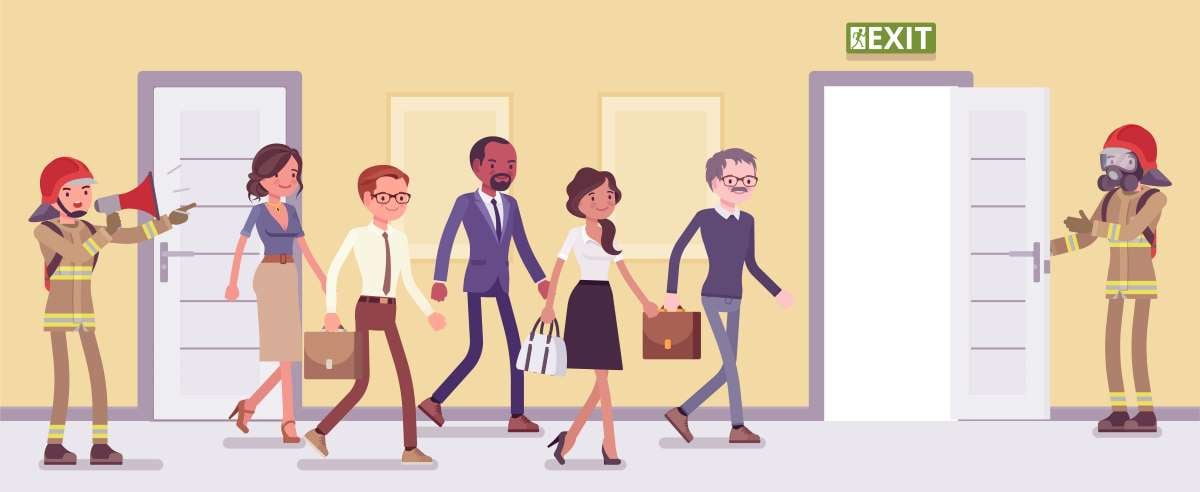
A fire evacuation plan details the steps that employees should take if there is a fire in the workplace. If your business doesn’t already have a fire evacuation plan, you should work on creating one ASAP. While it may seem unnecessary, your employees should be prepared to leave their facility quickly if there is a fire emergency. If your company, office building, or work facility doesn’t have a fire evacuation plan yet, there are several factors and steps you need to consider.
Delegate Roles
The first step to crafting a fire evacuation plan is creating an effective chain of command by designating a proper role for each employee. Some employees should be responsible for relaying orders to other workplace personnel or taking necessary actions to ensure appropriate safety protocols are met. Here are a few critical roles that any fire emergency response team should include:
Environmental Health & Safety Manager (EHS)
The EHS will manage your evacuation plan’s ongoing planning and preparation and schedule evacuation drills. If a fire does break out, the EHS is in charge of leading the evacuation effort, which means they must ensure that all rooms are clear, shut doors after people are gone, and conduct an employee headcount outside the building.
Communication Lead
As you may guess, the communication lead manages all communication and manages the communication plan. They call the fire department, activate the mass alert system to notify employees of the fire, and handle all other communication efforts.
Route Guides
Route guides will efficiently and safely direct employees out of the building to the evacuation point. They will direct the employees to the path of egress, which has the least amount of obstruction.
Designated Fire Extinguishers and Floor Monitors
Designated fire extinguishers receive proper training in using fire extinguishers to put out fires. On the other hand, floor monitors do a final sweep of each room to ensure every employee is out of the building.
Draw the Evacuation Map
The evacuation map should include primary and secondary escape routes. Consider factors such as where a fire is most likely to start, the clearest routes, and outside meet-up points. Secondary routes are critical in case the primary route is blocked.
Have the Right Equipment and Tools
Your workplace should have an Emergency Notification System, SASC systems, fire extinguishers, fire detectors, alarms, fire sprinkler systems, and other essential fire suppression equipment. Your equipment and systems should be regularly inspected.
Practice Makes Perfect
After everyone understands their role, schedule regular fire drills to prepare your workforce for the worst. Fire drills and proper employee training will expose weak spots and communication breakdowns, which will allow you to refine and improve your plan over time.
Protect Your Business Today
At Koorsen Fire & Security, we have been helping people protect their homes and businesses since 1946. Contact us today to learn more about establishing a fire evacuation plan.


